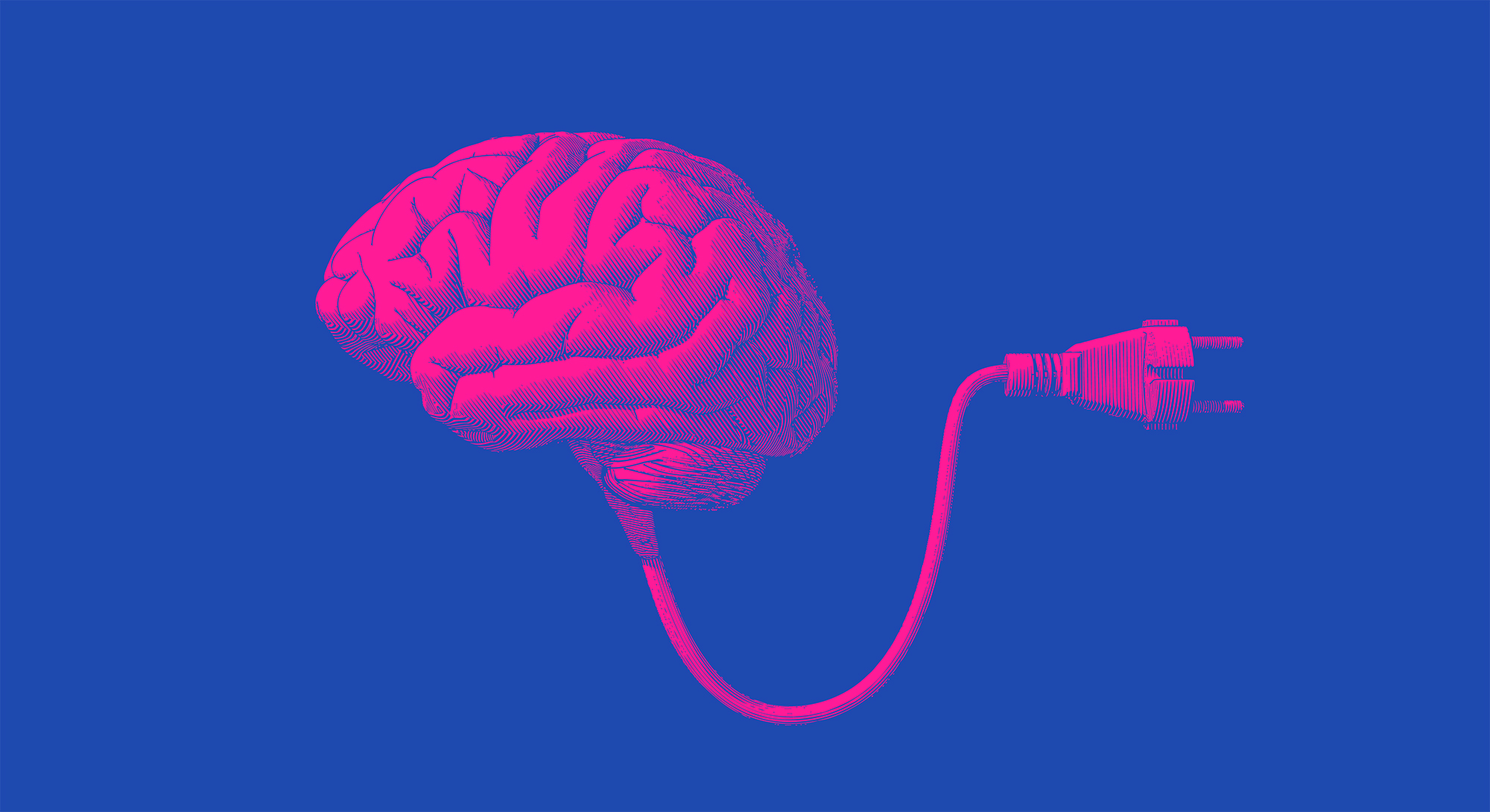Navigating the Mental Effects of AI-Driven Upskilling Demands

Amid the whirlwind of Artificial Intelligence (AI) advancements, the workforce is undergoing rapid transformation, giving rise to new skill demands and emphasizing the urgency for continuous learning.
A 2023 study by Sofia Morandini et al. on the impact of AI on workers’ skills shows that organizations must implement multiple strategies simultaneously to embrace the new technologies. These strategies include mapping transversal skills to mitigate the current skills gap and helping workers identify, improve, and develop new abilities and technical know-how required for AI adoption. To support employees in adapting to the changing, skill-based labor market, companies must establish processes providing ad hoc training and development opportunities, ensuring that workers’ attitudes and mental models towards AI remain open and receptive.

No wonder LinkedIn’s 2023 Workplace Learning Report highlights upskilling as the top priority for L&D leaders. It stresses the need to align learning programs with business goals, create a culture of lifelong learning, and empower employees to take ownership of their professional development. The magic word – some would call it an overused buzzword – mentioned repeatedly in the report is agility. Embracing the ability to adapt and respond to change quickly is key to navigating the dynamic and, increasingly, digitalized landscape of work:
And what is agility if not constant learning? To build a resilient and adaptable future, learning leaders are working across HR to ensure everyone has the tools, the career paths, and the skills to succeed.
LinkedIn 2023 Workplace Learning Report
Yet, as we prioritize upskilling and reskilling initiatives, are we fully addressing the psychological and societal ramifications of these L&D trends? While skills analysis is necessary, a comprehensive understanding of the broader impact is often overlooked. For example: How do AI-driven learning practices influence individuals’ cognitive load, decision-making, and motivation?
AI-Assisted eLearning and the Future of L&D
Just a decade ago, the L&D world was cluttered with paperwork, manual assessments, and slower-than-ideal employee-training cycles. Now, we stand on the brink of an AI-driven revolution in eLearning, which brings the potential for improved efficiency and more personalized training opportunities.
AI is already making waves in monitoring employee performance, tailoring learning experiences, and supporting employee well-being. As we move forward, we can expect AI to play an even more significant role in L&D, from developing dynamic learning paths to identifying and addressing generational knowledge gaps. Undoubtedly, AI-assisted learning has great potential.
Personalized Learning Paths Through Adaptive eLearning
As eLearning environments evolve into smart eLearning environments, they offer unparalleled opportunities to create personalized, adaptive learning experiences. AI-driven algorithms can detect learner behavior, preferences, and progress and adjust the learning paths accordingly – like a personal tutor guiding each team member through a tailored educational journey.
Here are four common use cases of adaptive eLearning that benefit organizations and enhance employee development today:
- Customized Learning Plans: AI algorithms analyze workers’ performance and learning styles to create tailored learning plans, focusing on their strengths and weaknesses. This targeted approach makes the learning process more effective and enables L&D leaders to enhance overall workforce competency by addressing specific skill gaps.
- Dynamic Content Delivery: Adaptive eLearning systems can deliver content in various formats (e.g., video, text, or audio) based on individual preferences and prior knowledge, ensuring learners receive information in the most accessible and understandable way possible. The promised results of such flexible content delivery are increased engagement and improved knowledge retention.
- Skill Gap Analysis and Remediation: AI-powered platforms can identify areas for improvement in a team member’s knowledge and abilities and offer tailored resources to help them address these gaps, leading to a more well-rounded learning experience. With this proactive approach, organizations optimize their training initiatives to ensure their employees remain up-to-date and able to tackle new tasks with confidence, including those related to AI adoption itself.
- Natural Language Processing (NLP): Implementing NLP tools like chatbots and virtual assistants in eLearning solutions enhances language learning, facilitates text analysis, speeds up content creation, and enables more effective communication between learners and AI-based systems. Employees can develop strong communication skills by streamlining the learning process and improving training materials, which is crucial for professional success.
But with increased digitalization and automation comes a pressing need to adapt our skillsets to preserve our role as masters of the new tools, not soon-to-be-replaced relics. So, the critical question is: AI is moving fast – do we need to move faster to keep up?
The Upskilling and Reskilling Imperative
According to learning tech expert Nelson Sivalingam, embracing the upskilling and reskilling imperative is the best strategy to stay ahead of the curve: “Speed of learning is your organization’s competitive advantage. The faster your workforce can learn and apply what they learn, the more likely your company will win.”

He emphasizes the importance of harnessing personalized learning experiences to keep pace with the rapidly evolving digital landscape.
The research suggests that the timely delivery of just enough learning, tailored to the individual’s need and incorporated into everyday work, is how people learn best.
Nelson Sivalingam
This requires a fundamental shift in L&D practices. In today’s blink-and-you-miss-it world of digital innovation, adapting Lean Learning is not just smart; it’s survival. By implementing an Agile methodology, organizations can foster a dynamic environment that champions continuous learning and encourages employees to develop their skills as the job evolves.
Small learning chunks. Fast delivery. Targeted training. These are the instruments Sivalingam believes L&D professionals should harmoniously employ.
By understanding the specific challenges and prioritizing speed over perfection, L&D leaders should focus on keeping the workforce competitive and well-prepared for future challenges, come what may.
At the very least, this means focusing on three areas:
1. Upskilling and Reskilling Initiatives: Digital Literacy
As technology increasingly impacts every aspect of our lives, digital upskilling and reskilling have become vital coping mechanisms for adaptation. Companies must invest in their employees’ digital skill development, helping them to continue to perform well in their roles.

But it’s not enough to provide access to new tools such as ChatGPT; organizations must address privacy and security concerns by implementing comprehensive training programs on responsible use, data protection, and potential risks associated with these powerful technologies.
2. Skills Gap Analysis and Cross-functional Training
According to a study by PwC, 30% of jobs will be at risk of automation by 2030, which necessitates preparing employees to navigate an AI-powered workplace. As machines take over more and more process-oriented tasks, workers must adjust their skill-building to excel in higher-level tasks such as problem-solving, analysis, and interpersonal communication.

By addressing these challenges proactively, organizations can reduce the likelihood of layoffs due to obsolescence and maintain their employees’ relevance in the changing workplace.
3. Fostering a Culture of Continuous Learning
Ultimately, these trends and developments demonstrate a clear need for companies to invest in continuous learning, for example by:
- Adopting a learning organization model: Encourage growth and investment in employee learning with a strong shared vision, operating on a whole “systems-thinking” premise and integrated practices.
- Implementing continuous improvement strategies: Utilize Kaizen and Lean model approaches to focus on systematic, ongoing process and product improvement, creating a problem-solving culture.
- Promoting an innovation culture: Support curiosity and creativity while embracing risk-taking and critical thinking to tackle the speed of digital disruption.
Learn more about continuous learning in the following Journal contributions:
The Cognitive Cost: Exploring the Psychological Burden of Continuous Adaptation
One concept that sticks out in this discussion is adaptation. While the benefits of upskilling for individuals, teams, and organizations are clear and have been widely documented – improved productivity, talent retention, better job satisfaction, and innovation – few critical voices examine the cognitive cost of constant adaptation.
Of course, there is no shortage of other, more general concerns about generative AI technologies and the way they reshape the world of work, if not the world as a whole. The media is full of it; some would say “too full.” Whether it’s the much-cited fear of future job displacement, loss of privacy, plagiarism, or the spread of misinformation, there’s a growing awareness of the dangers of AI advancements.
But what about the more subtle effects of these developments, including psychological and neurological changes triggered by the continuous upskilling process?
How might the cognitive demands of life accelerated by AI-driven automation alter our thinking, problem-solving, and perhaps even our sense of self?
Balancing Intrinsic Cognitive Load and Adaptation
A brief consideration of John Sweller’s Cognitive Load Theory (CLT) provides fascinating insights into these questions. Although first introduced in 1988 – a time still far removed from the hustle and bustle of today’s upskilling culture, the theory’s central concepts, intrinsic and extraneous cognitive load, remain relevant.
Both types of mental activity are steadily increasing as we grapple with the need to learn new skills and adapt to advancing technologies. Consequently, cognitive overload looms large, making it difficult to process and retain new information effectively.
The implications? As time passes, the mounting cognitive burden stemming from continuous adaptation may not only compromise our cognitive capacity but also inflict a deeper impact on our overall well-being. Drawing from CLT, the constant strain on our mental resources could give rise to elevated stress and deteriorating mental health. In the long run, this might manifest as a more profound struggle with burnout, wavering job satisfaction and enduring vulnerability in a relentlessly changing world.
While some critics argue that CLT’s applicability is limited to specific learning situations and may not account for individual differences in cognitive abilities, the theory’s focus on managing cognitive overload resonates with today’s workplace challenges, such as the constant need to master new tools and adjust work processes accordingly.
Educational psychology aside, it’s hard to ignore the everyday benefits of reducing mental clutter. But then again, how is this even possible at this time of exponential complexity?
The Paralysis of Choice: How Endless Options Impact Decision-Making
One way to address this issue is by examining the role that choice plays in decision-making, as outlined by psychologist Barry Schwartz in his book, The Paradox of Choice.

Schwartz investigates the negative consequences of having too many options – an example of mental and emotional overload that can lead to decision paralysis and increased anxiety. This phenomenon is particularly relevant in contemporary upskilling practices, as individuals are overwhelmed by the vast array of courses, certifications, and learning paths available to them.
Our culture sanctifies freedom of choice so profoundly that the benefits of infinite options seem self-evident.
Barry Schwartz
However, this overwhelming freedom of choice, coupled with the pressure to choose quickly, can also create a pervasive sense of Fear of Missing Out (FOMO), intensifying the urge to make the “perfect” decision and exacerbating the psychological toll.
Overwhelming Upskilling Options and the Fear of Making the Wrong Choice
The paradox of choice suggests that this abundance of options can actually hinder people from making informed decisions about their career development. The fear of making the wrong choice in the face of countless upskilling opportunities leaves individuals uncertain about which path to pursue, further complicating the decision-making process.
The psychological burden of opportunity cost comes into play when we feel that by choosing one option, we’re missing out on the potential benefits of others. For example, you may hesitate to enroll in a coding course because you don’t know which programming languages will be most in demand once you finish your studies or if generative AI will, in fact, render the skills you gain obsolete. This burden might lead to constant second-guessing and dissatisfaction with the decision you make.
We must decide, individually, when choice really matters and focus our energies there, even if it means letting many other opportunities pass us by.
Barry Schwartz
To overcome this paralysis of choice, we should adopt a “satisficing” approach, as Schwartz suggests. By setting clear criteria for our learning goals and being content with a “good-enough” choice, we can alleviate the stress caused by the overwhelming array of options and focus on developing the skills we need to thrive in the present and future.
So, good enough may indeed be good enough when it comes to balancing technology-driven upskilling demands with a healthy resistance to constant adaptation.
After all, continuous education is not about reinventing ourselves beyond self-recognition in response to external pressures. It’s a process that, today more than ever, requires us to balance progress with introspection.
Assess your options. Choose progress over perfection. Keep calm in the chaos. It’s as complex as that.









